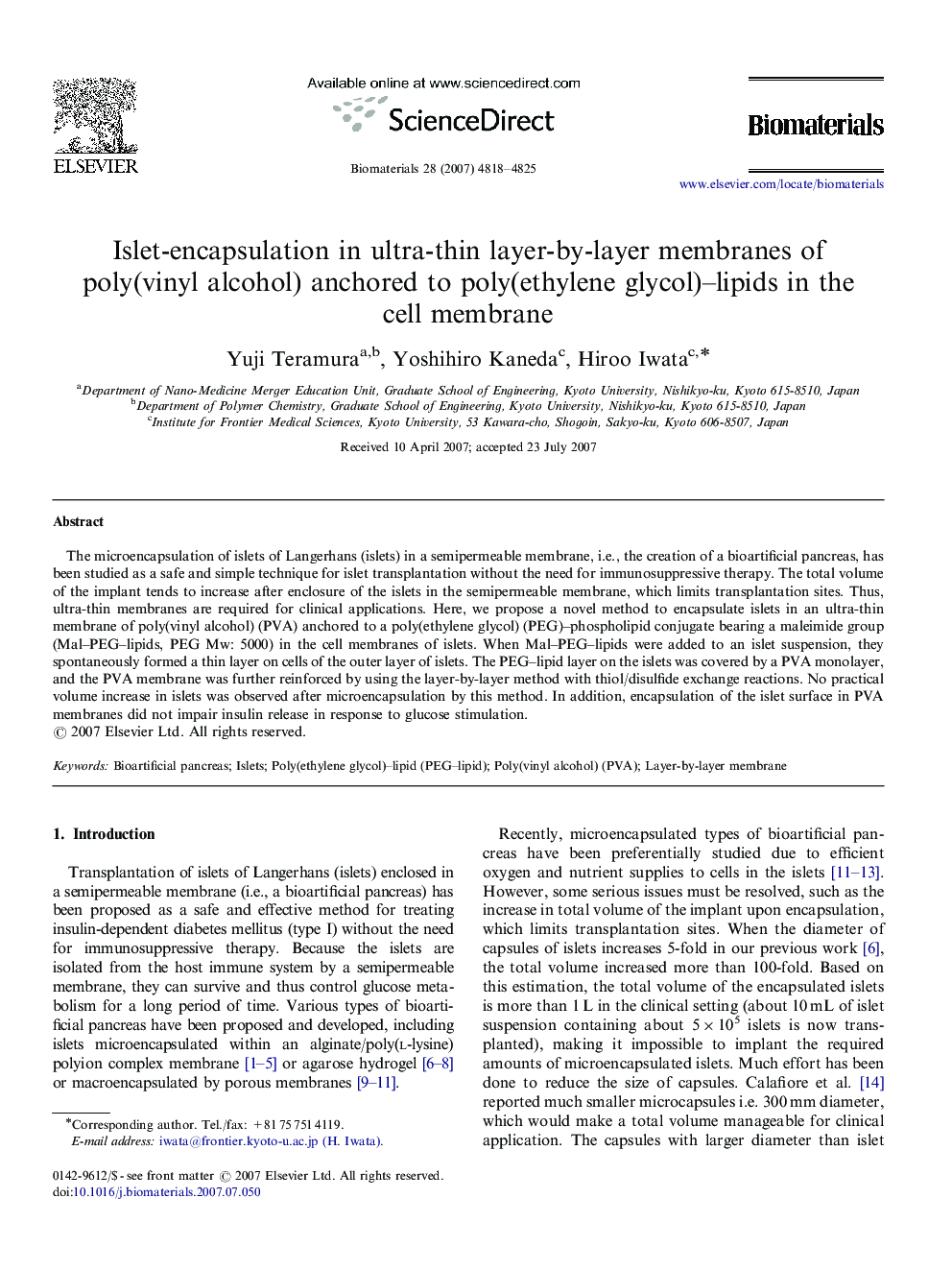| Article ID | Journal | Published Year | Pages | File Type |
|---|---|---|---|---|
| 10651 | Biomaterials | 2007 | 8 Pages |
The microencapsulation of islets of Langerhans (islets) in a semipermeable membrane, i.e., the creation of a bioartificial pancreas, has been studied as a safe and simple technique for islet transplantation without the need for immunosuppressive therapy. The total volume of the implant tends to increase after enclosure of the islets in the semipermeable membrane, which limits transplantation sites. Thus, ultra-thin membranes are required for clinical applications. Here, we propose a novel method to encapsulate islets in an ultra-thin membrane of poly(vinyl alcohol) (PVA) anchored to a poly(ethylene glycol) (PEG)–phospholipid conjugate bearing a maleimide group (Mal–PEG–lipids, PEG Mw: 5000) in the cell membranes of islets. When Mal–PEG–lipids were added to an islet suspension, they spontaneously formed a thin layer on cells of the outer layer of islets. The PEG–lipid layer on the islets was covered by a PVA monolayer, and the PVA membrane was further reinforced by using the layer-by-layer method with thiol/disulfide exchange reactions. No practical volume increase in islets was observed after microencapsulation by this method. In addition, encapsulation of the islet surface in PVA membranes did not impair insulin release in response to glucose stimulation.
